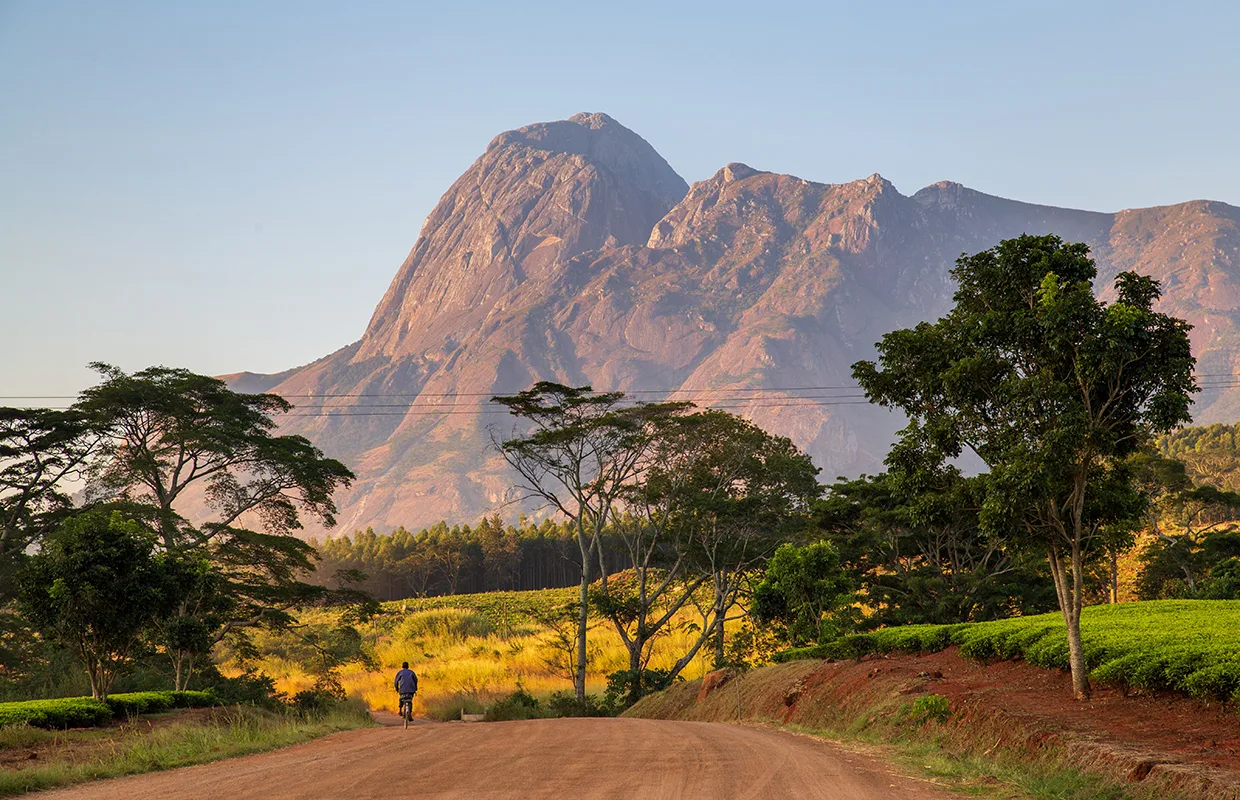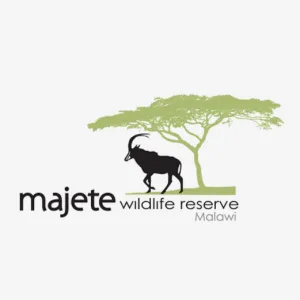MALAWI
Malawi, often referred to as the ‘warm heart of Africa’, is characterised by its diverse topography, including highlands bisected by the Great Rift Valley, which runs the length of the country, with Lake Malawi covering a significant portion of it.
Spanning just 45,747 square miles, Malawi boasts a rich variety of wildlife and stunning scenery within its compact borders. The country’s varied altitudes contribute to one of the most diverse landscapes in Africa, with peaks rising to 10,000 feet whilst the lowest points are just above sea level.
Amongst the country’s notable geographical features is Mount Mulanje, part of a protected forest reserve and home to many endemic plant and animal species.
The wildlife that inhabits Malawi’s varied terrain is impressive, ranging from mammals such as hippos, antelopes, monkeys, and bats to birds of prey, parrots, falcons, waterfowl, owls, and songbirds.
Liwonde National Park is the only place in the country where visitors have the opportunity and privilege to see the Big Five, consisting of elephants, lions, leopards, buffalo, and black rhinos.
One of Malawi’s greatest assets is its people, who are renowned for their warmth and friendliness. With a population of over 22 million, the majority reside in rural, traditional villages. The country is home to a rich cultural mix of tribes including the Lomwe, Yao, Ngoni, Tumbuka, and Chewa – the largest in Malawi.
The country offers sites of cultural and historical significance that provide an insight into its past and present. Many lodges feature national music and dance performances that reflect the nation’s rich heritage, whilst a contemporary music and arts scene is also emerging.
Any visit to Malawi will inevitably include an element of cultural experience. Even if you don’t witness a vibrant dance display or visit a museum or village, interacting with local people will allow you to learn about daily life in Africa.
Malawi is home to many vibrant cities and charming towns with colourful marketplaces. The former capital city, Zomba, was replaced by Lilongwe in 1975. Located at the base of the Zomba Plateau, which is decorated by forest trails, waterfalls, and stunning panoramic views, the city’s British colonial history is reflected in its architecture.
Malawi’s rich tapestry is woven from threads of tradition, nature, and culture, showcasing ancient sites, colonial churches, and modern structures, creating a wonderful, welcoming, and diverse country.
Q&A WITH THE MALAWI MINISTRY OF TOURISM
Endowed with spectacular scenery and inhabited by diverse wildlife, Malawi is known for its warm hospitality and historic traditions. The Malawi Ministry of Tourism’s Public Relations Officer, Joseph Nkosi, tells us why everyone should explore Africa’s hidden treasure.
The Malawi Ministry of Tourism (MMT) was established to cultivate and sustain a vibrant, appealing destination image, inspire and inform potential visitors, and highlight Malawi’s unique attractions and rich cultural heritage.
By showcasing its breathtaking landscapes, abundant wildlife, and warm, welcoming communities, the ministry seeks to entice travellers from around the globe to experience the diverse offerings of this beautiful country.
Through targeted marketing campaigns and promoting sustainable tourism practices, MMT strives to position Malawi as a must-visit destination in Africa, fostering economic growth and cultural exchange.
Firstly, can you provide an insight into MMT, what it has achieved since its inception, and how it has shaped Malawi as a meetings, incentives, conferences, and exhibitions (MICE) destination?
Joseph Nkosi, Public Relations Officer (JN): MMT is mandated to develop and promote tourism as well as conserve wildlife to support the country’s socioeconomic growth and development.
Some of our achievements include implementing policies and strategies that have established Malawi as a sustainable tourism destination. This success is attributed to developing and implementing key policies and essential frameworks, such as the National Tourism Policy, Tourism Marketing Strategy, and Ecotourism Development Strategy.
Whilst regulations and standards ensure a quality tourism experience, Malawi has developed and utilised a classification and grading system for tourism enterprises, contributing to the sector’s growth.
Marketing and promotion are vital for boosting tourism. The ministry consistently represents Malawi at prominent international tourism fairs and exhibitions such as WTM London, ITB Berlin, and Africa’s Travel Indaba, and facilitates immersive press trips for international media.
In terms of development and investment, we have observed growth in the sector over the years, both in infrastructure and service quality, and developed the Malawi National Tourism Investment Master Plan (MNTIMP).
Regarding wildlife conservation, Malawi has achieved remarkable triumphs and revitalised our ‘Big Five’ populations within the Majete, Liwonde, and Kasungu National Parks, all of which were once in critical decline.
We are also shaping Malawi as a MICE destination. Whilst Malawi is renowned for its natural beauty, MMT is actively working to enhance its MICE capabilities. Efforts are underway to improve conference facilities, upgrade hotels, and develop better roads and services to make Malawi a viable MICE option.
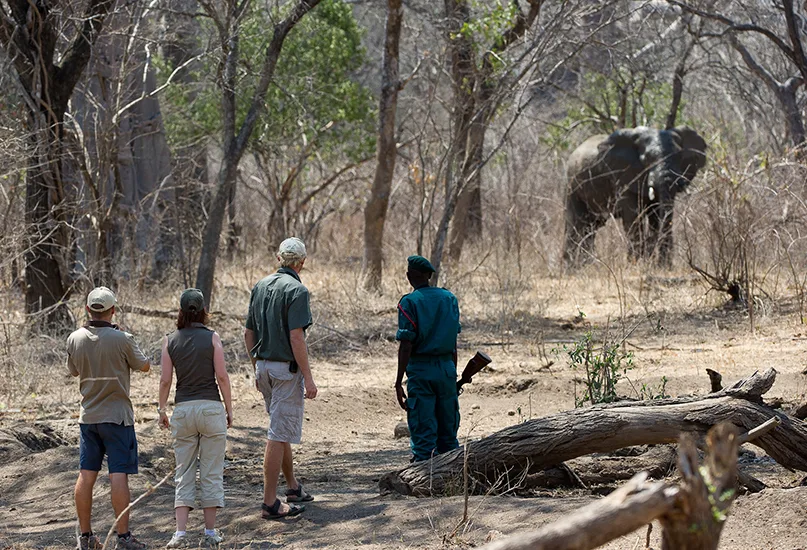
What are the organisation’s current goals?
JN: One of our primary objectives is to develop and promote a sustainable tourism sector that contributes to the country’s socioeconomic development.
This encompasses responsible tourism practices that protect the environment and benefit local communities.
Additionally, we aim to enhance the tourism sector’s contribution to Malawi’s GDP by attracting more tourists, generating foreign exchange, and creating employment opportunities.
How do you market Malawi as a destination?
JN: We promote Malawi as a tourism destination through various strategies highlighting its unique natural beauty, diverse wildlife, and rich cultural heritage.
Key initiatives include participation in international tourism fairs, collaboration with our embassies, engaging market representation companies in the USA, Netherlands, and China, hosting a Malawi International Tourism Expo, and organising personalised travel media tours from our various source markets, amongst others.
How do you promote off-season travel, for example, during the rainy season?
JN: Whilst the dry season is generally regarded as the peak period for tourism in Malawi, there are strategies in place to encourage off-season travel, which primarily coincides with the rainy season.
Malawi promotes the rainy season as an optimal time for niche offerings such as fishing and birdwatching as we have over 650 bird species, 10 percent of which cannot be found anywhere else in Southern Africa.

Are there any interesting projects in the pipeline you wish to highlight?
JN: Implementation of MNTIMP is a significant project that encompasses 103 identified projects, with 10 priority projects having already undergone pre-feasibility studies.
The ongoing execution of this master plan remains a primary focus, which includes attracting investment for the various projects.
Additionally, several 5-star hotels are being developed in Lilongwe and Blantyre to support the promotion of Malawi as a premier MICE destination.
Why, in your opinion, should someone visit Malawi?
JN: The following are 10 reasons to visit Malawi:
- Pleasant climate
- Peaceful and compact
- Big in hospitality
- Lake Malawi
- Africa’s newest ‘Big Five’ destination
- Authentic nature experiences
- Attractive outdoor sporting conditions
- Rich cultural heritage
- Local delicacies
- Popular local events
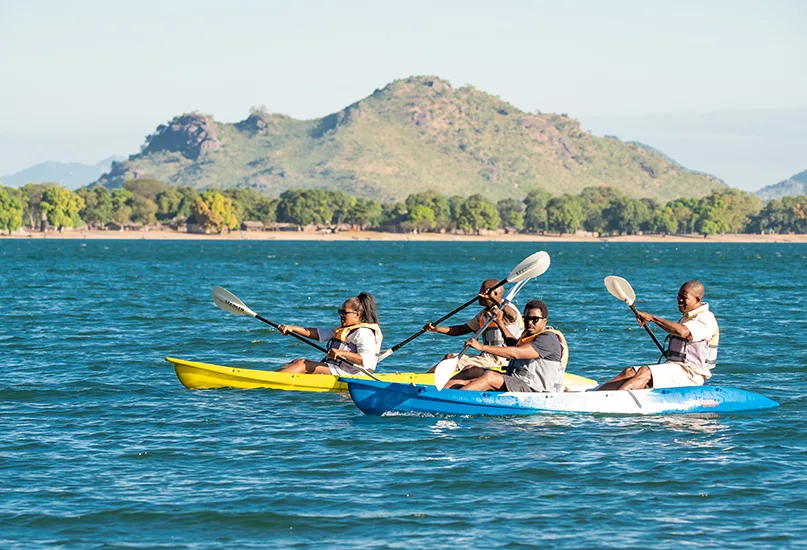
What are some of the country’s most unique landmarks?
JN: Lake Malawi is an extensive freshwater lake and a hallmark of Malawi, showcasing breathtaking scenery, rich diversity of aquatic life, and a range of water sports opportunities. Its crystal-clear waters and vibrant fish populations contribute to its distinctive appeal.
Then there’s Mount Mulanje, a majestic mountain characterised by towering peaks that reach an elevation of 3,002 metres (m) above sea level. Its deep gorges and unique flora are a haven for hikers and nature enthusiasts.
The Chongoni Rock Art Area is a UNESCO World Heritage Site that showcases an impressive collection of rock paintings, offering valuable insights into the cultural traditions of the region’s ancient inhabitants.
Liwonde National Park is renowned for its revitalised wildlife populations and the Shire River that flows through it. The boat safaris along the Shire River are particularly popular.
What trends are transforming the tourism industry in Malawi, and how are you utilising them?
JN: The global tourism industry is continuously evolving, and Malawi is adapting to these changes.
Notable trends include ecotourism and sustainable travel; there is a rising demand for responsible travel experiences that minimise environmental impact and benefit local communities.
Malawi is leveraging this opportunity by promoting its national parks, wildlife reserves, and eco-lodges.
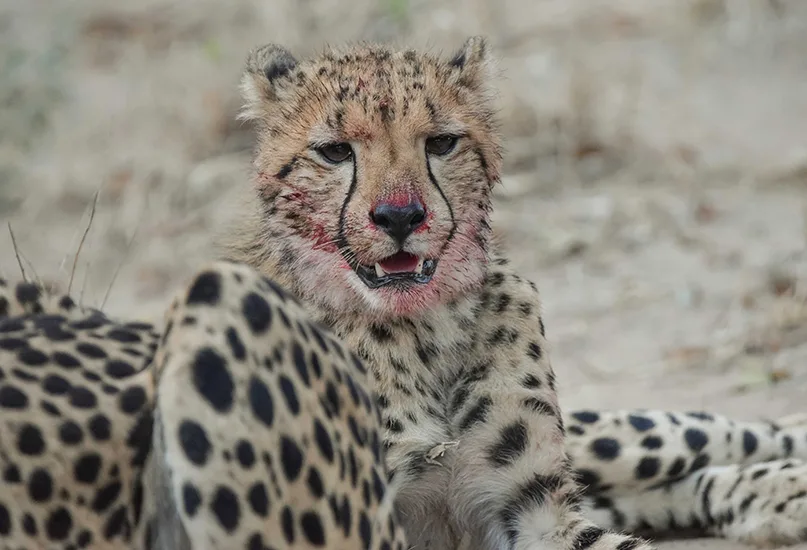
What challenges does the tourist industry in Malawi face?
JN: Whilst efforts are being made, Malawi’s marketing and promotion efforts may not be as extensive as those of other regional competitors.
There is a need to increase awareness of Malawi as a tourist destination in key international markets. The lack of direct flights from key source markets makes the destination somewhat expensive, however plans are underway to address this issue.
Finally, are you optimistic about the future of tourism in Malawi?
JN: There are compelling reasons to be optimistic about the future of the tourism industry in Malawi. The country’s unique natural beauty, diverse wildlife, and rich cultural heritage are increasingly gaining recognition among international travellers.
Furthermore, the Malawi government has identified the tourism sector as a key contributor to the nation’s economic growth and has prioritised it, indicating a promising future for the industry.
MOUNT MULANJE
Mount Mulanje is an awe-inspiring massif in Southern Malawi, near the border with Mozambique.
Rising dramatically from the surrounding plains, Mount Mulanje is often called the ‘Island in the Sky’ due to its towering peaks and vast plateaus that appear to float above the landscape. It is the highest mountain in Central Africa, with Sapitwa Peak reaching an elevation of 3,002m, making it a prominent feature in Malawi’s geography and a key attraction for adventurers, hikers, and nature lovers.
Geography and Landscape
Mount Mulanje is a granite inselberg – a massive rock formation that has resisted erosion over millions of years, leaving behind steep cliffs, deep ravines, and lush valleys. The massif spans an area of approximately 650 square kilometres, with numerous peaks, waterfalls, and rivers criss-crossing its slopes.
The landscape is incredibly diverse, featuring dense rainforests, grasslands, and rocky outcrops.
The mountain is surrounded by the Mount Mulanje Forest Reserve, home to the endangered Mulanje cedar, Malawi’s national tree.
Unfortunately, illegal logging and deforestation have significantly reduced the cedar population, prompting conservation efforts to replant and protect this rare species.
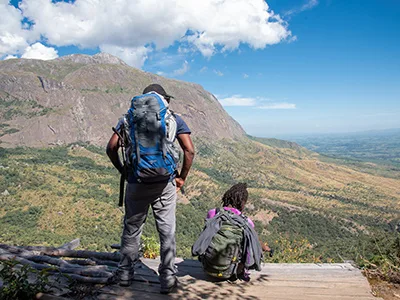
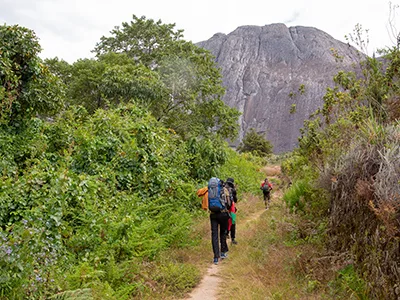
Hiking and Adventure
The mountain is a paradise for hikers, offering a wide range of trails that vary in difficulty.
Some of the most popular routes lead to Sapitwa Peak, Chambe Basin, and Lichenya Plateau. Hikers often take two to three days to reach Sapitwa Peak, the highest point, passing through misty forests, rocky terrain, and breathtaking viewpoints.
Several huts are scattered across the mountain, providing shelter for trekkers.
These basic accommodations, run by the Mount Mulanje Conservation Trust (MMCT), make multi-day hikes possible.
Some well-known huts include Chambe, Lichenya, and Thuchila, all offering a rustic but scenic resting spot.
Rock climbers are also drawn to Mount Mulanje’s sheer granite faces, with Chambe Peak being one of the most challenging climbs in Africa. With vertical walls exceeding 1,700m, it is a dream destination for experienced climbers.
Biodiversity and Wildlife
Mount Mulanje hosts a unique ecosystem with a variety of endemic plant and animal species.
Apart from the famous Mulanje cedar, the slopes are home to ancient miombo woodlands, orchids, and giant ferns.
Wildlife includes duikers (small antelopes), hyraxes, and vervet monkeys. Birdwatchers can spot species like the Thyolo alethe, white-winged apalis, and the elusive spotted ground thrush.
Streams and rivers flowing from the mountain are crystal clear, providing water to local communities and supporting trout farming. The cool pools and waterfalls, such as Dziwe la Nkhalamba, offer refreshing stops for hikers.
Cultural and Mythological Significance
The mountain has deep cultural and spiritual significance for the Lomwe and Chewa people of Malawi.
According to local legends, Sapitwa Peak is inhabited by ancestral spirits and mystical beings. Some believe that the peak holds secrets and is a place where the physical and spiritual worlds connect.
Mount Mulanje is a natural wonder that offers adventure, breathtaking scenery, and rich cultural heritage.
Whether hiking, climbing, or simply enjoying its tranquil beauty, the mountain remains one of Malawi’s most iconic landmarks and a must-visit destination for nature enthusiasts.
CULTURAL HISTORY AND HERITAGE IN FOCUS
High on a plateau central to Malawi, the Chongoni Rock Art area – a UNESCO World Heritage Site – is in a cluster of forested granite hills that house a scarce tradition of farmer rock art as well as paintings by Batwa hunter-gatherers from the late Stone Age.
High on a plateau central to Malawi, the Chongoni Rock Art area – a UNESCO World Heritage Site – is in a cluster of forested granite hills that house a scarce tradition of farmer rock art as well as paintings by Batwa hunter-gatherers from the late Stone Age.
High on a plateau central to Malawi, the Chongoni Rock Art area – a UNESCO World Heritage Site – is in a cluster of forested granite hills that house a scarce tradition of farmer rock art as well as paintings by Batwa hunter-gatherers from the late Stone Age.
High on a plateau central to Malawi, the Chongoni Rock Art area – a UNESCO World Heritage Site – is in a cluster of forested granite hills that house a scarce tradition of farmer rock art as well as paintings by Batwa hunter-gatherers from the late Stone Age.
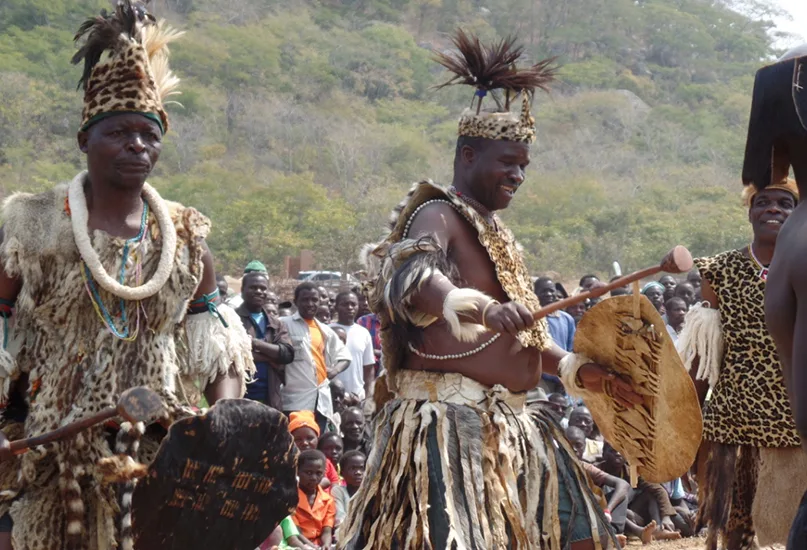
High on a plateau central to Malawi, the Chongoni Rock Art area – a UNESCO World Heritage Site – is in a cluster of forested granite hills that house a scarce tradition of farmer rock art as well as paintings by Batwa hunter-gatherers from the late Stone Age.
High on a plateau central to Malawi, the Chongoni Rock Art area – a UNESCO World Heritage Site – is in a cluster of forested granite hills that house a scarce tradition of farmer rock art as well as paintings by Batwa hunter-gatherers from the late Stone Age.
High on a plateau central to Malawi, the Chongoni Rock Art area – a UNESCO World Heritage Site – is in a cluster of forested granite hills that house a scarce tradition of farmer rock art as well as paintings by Batwa hunter-gatherers from the late Stone Age.
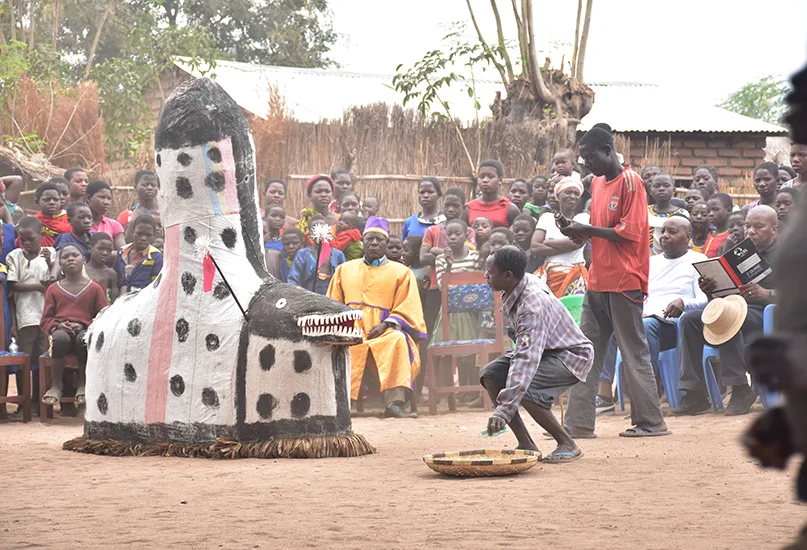
OUTLOOK RECOMMENDS
Eat:
FOR TANTALISING AUTHENTICITY…
ZATHU Cape Community Kitchen & Bar is a vibrant eatery with a diverse menu highlighting local Malawian flavours and international cuisine. The breathtaking lake views are an added bonus.
FOR INDULGING IN FRESH FISH…
Kumadzi Restaurant is an ideal spot to explore Malawi’s culinary landscape in an inviting atmosphere. Guests will enjoy memorable meals featuring nsima, a traditional dish made from maize flour and water, alongside fresh fish from Lake Malawi.
Do:
FOR AN AFRICAN ADVENTURE…
FOR AN UNRIVALLED EXPERIENCE…
Witness elephants bathing alongside wallowing hippos and herds of majestic zebra, buffalo, and sable antelope against the backdrop of a natural habitat haven at Majete Wildlife Reserve.
There are options for a self-drive day visit with or without a guide; alternatively, guests can experience the reserve from the Shire River on an afternoon boat excursion.
Dine at the reserve’s Mwembezi Restaurant, which overlooks a watering hole, or cool off between wildlife encounters in the Heritage pool.
Overnight stays are available at campsites and lodges with chalets, all with various amenities, including a unique natural bio-pool. Furthermore, you can enjoy a procession of cheetahs, lions, and giraffes amongst elusive species of birds.
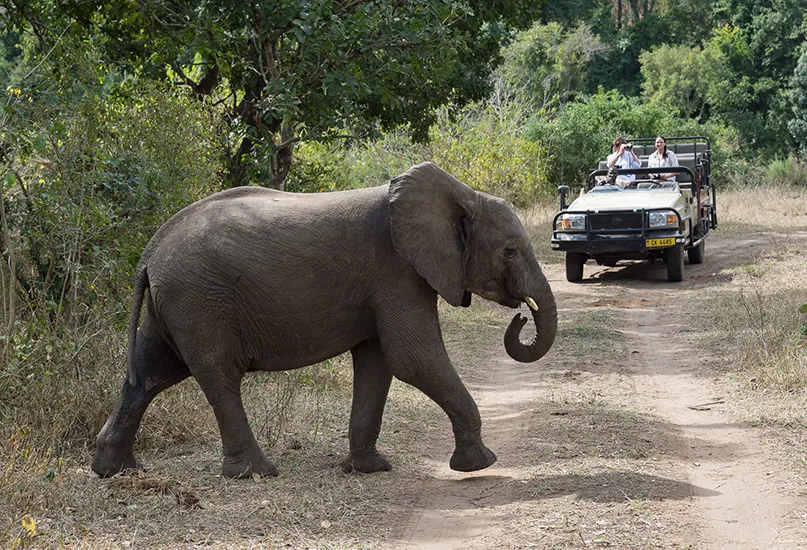
Sleep:
FOR A SLICE OF PARADISE…
FOR A SERENE SLEEP…
At the foot of Zomba Palteau in the low-lying area of Old Naisi is Wadonda Suites, comprising 10 hotel-style rooms, four of which are fitted with kitchenettes. The peace afforded enables a perfect getaway for ideation or reflection, with amenities such as an on-site outdoor swimming pool, bar, café, and parking.
LANDMARK ATTRACTIONS
Likoma Island
On the far side of Lake Malawi lies a small island with idyllic beaches that can be easily explored on foot. Accessible by boat or plane, Likoma Island was established as the University Mission to Central Africa’s headquarters in the 1800s, aiming to combat the slave trade that utilised routes across the lake. However, the primary attraction of Likoma Island is St. Peter’s Cathedral, renowned for its impressive architecture and historical significance.
Lizulu Market
From fresh fruits and vegetables to woodcrafts and weavings, the various marketplaces in Malawi buzz with activity. Lizulu Market is the country’s largest and busiest roadside market, with food and clothing stalls lining each side of the Lilongwe River, connected by bamboo bridges.
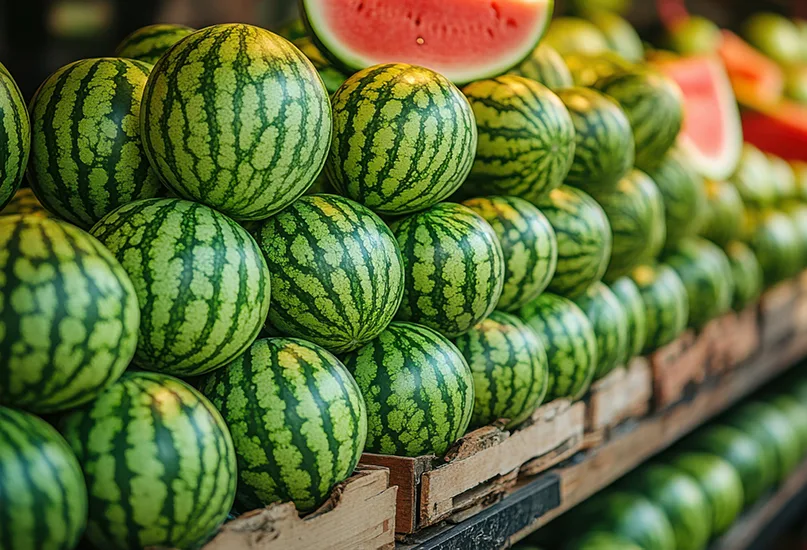
Dedza Mountain
Dezda, the highest town in Malawi, is set against stunning highland scenery, with the impressive Dezda Mountain towering in the background. This breathtaking majestic peak offers the opportunity to experience the beauty of nature whilst enjoying invigorating hikes that lead to panoramic views of the surrounding area. Visitors will also be captivated by the mountain’s rich biodiversity.
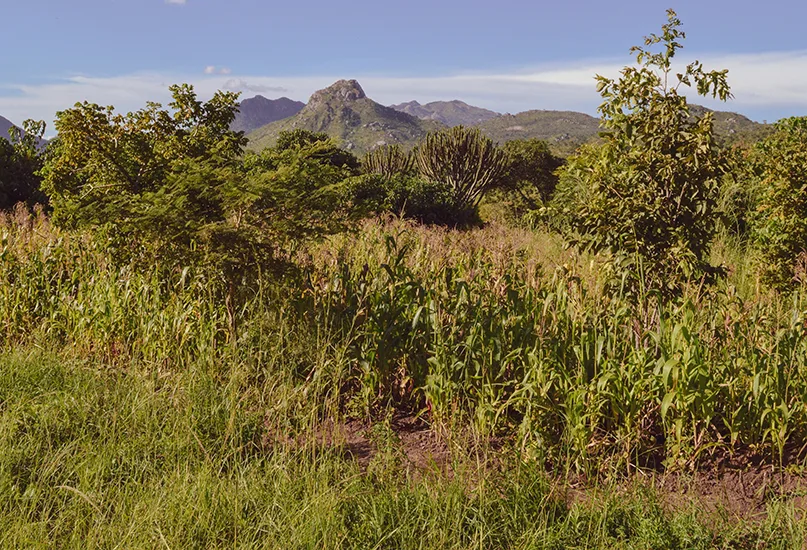
GETTING THERE & AROUND
Malawi’s main entry point is Kamuzu International Airport (LLW), located 16mi from Lilongwe. Some flights also arrive at Chileka International Airport (BLZ), 10mi from Blantyre – the country’s financial and commercial centre and its second-largest city.
A reliable coach network offers a sociable way to travel whilst enjoying panoramic views of the passing countryside. The two leading coach companies in Malawi are Axa and SoSoSo, which both play music during the journey. Once in the cities, hiring a taxi is easy and generally affordable.
In rural areas, exploring by bike is a fun way to discover the back roads, and most lodges offer bike rentals, whilst cycling with a guide is a great way to experience the local area.
Hiring a car is essential if you plan to go wildlife watching at Malawi’s national parks. Driving on dirt roads can be challenging during the dry season, so a four-wheel drive vehicle is recommended.
Consider hiring an experienced driver when visiting remote areas, as they can also serve as a guide, providing valuable information about the country. For travellers with disabilities, car hires with wheelchair-accessible options are the best choice.
For a memorable excursion, consider taking a ferry on Lake Malawi, which travels between Monkey Bay in the south and Chilumba in the north. The MV Ilala has been in service for over 70 years and offers unique vistas of this tranquil lake and its shores. Cabins are available on board, along with food and drinks.


